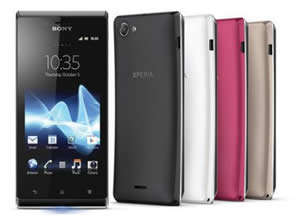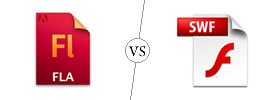Difference between Sony Xperia E and Sony Xperia J
Key difference: The Sony Xperia E and E-Dual are two entry-level phones from Sony Mobile. The phone comes with a 3.5 TFT capacitive that has a ~165 ppi pixel density. It comes with a 1 GHz Cortex-A5 Qualcomm Snapdragon processor, an Adreno 200 GPU and 512 MB RAM. Xperia J was announced in October 2012 as a cheaper variant of the Xperia T, resulting in the phone sporting a similar design to the T. The Xperia J features a 4-inch scratch-resistant TFT touchscreen that offers a pixel density of 245.
 Sony is a popular smartphone company and has been launching popular phones under the Xperia Brand. Since, its separation with Ericsson, the company has introduced multiple phones in different ranges to cater to all types of demands. The widespread demand of smartphones has required many companies to start manufacturing low-end phones for the masses. The new 2013 line-up of Sony phones include the Sony Xperia E and E-Dual phones. These phones are identical to each other and only differ in some features.
Sony is a popular smartphone company and has been launching popular phones under the Xperia Brand. Since, its separation with Ericsson, the company has introduced multiple phones in different ranges to cater to all types of demands. The widespread demand of smartphones has required many companies to start manufacturing low-end phones for the masses. The new 2013 line-up of Sony phones include the Sony Xperia E and E-Dual phones. These phones are identical to each other and only differ in some features.
The Sony Xperia E and E-Dual are two entry-level phones from Sony Mobile. These are the few of the cheapest models available on the market that have pretty decent features for a low-end phone. The phone has similar design themes to the older Sony phones with a slight inward curve and has shaved a lot of back bulk. The phone is slim and straight and is easy to operate using one hand. The company has also ditched the cheap, plastic back and replaced with it a rubber matte finish. This makes the back prone to fingerprint smudges, while the front screen is completely prone to fingerprints and dust smudges.
The front of the phone has a 3.5-inch display screen with three capacitive (Home, Menu and Back) buttons on the bottom. Above the screen is the earpiece, a hidden status LED and the proximity sensor. On the top end of the device, there is just a 3.5mm headphone jack, while the left side has a microUSB port. The bottom of the screen has a small LED light, while the right side of the device holds the volume rocker, power button and the dedicated camera key. The back of the devices holds the camera on the top and the loud speaker grille on the bottom.
The phone comes with a 3.5 TFT capacitive that has a ~165 ppi pixel density. In terms of technology these days, the resolution and the density is pretty weak, but as this is a entry-level the resolution is decent for the price. However, do not expect high definition resolution. The phone has pretty low contrast and poor viewing angles. The screen is made using scratch-resistant glass proving some sort of protection from scratches. The phone comes with the traditional Sony Timescape UI, which means it comes with certain built-in Timescape applications that are not removable.
In terms of speed and power, the phone is good for an entry-level model. It comes with a 1 GHz Cortex-A5 Qualcomm Snapdragon processor, an Adreno 200 GPU and 512 MB RAM. The phone supports 2G and 3G but not 4G. The Xperia E comes with Android 4.1 Jelly Bean out of the box, which is a good set-up. The Xperia E-Dual comes with Android 4.0.4 Ice Cream Sandwihch but can be upgraded to Jelly Bean. The Jelly Bean comes with all of the special features of Google, including Google Now. There are few modifications to the Android software. Upon unlocking the screen, the home screen has five screens, which are customizable. The differences between the ICS and Jelly Bean can be read in the article, The Difference between Ice Cream Sandwich and Jelly Bean on the website.
The major difference between the E and the E-Dual is that E-Dual supports dual SIM technology, while the E only supports single SIM. Both the phones come with a 3.15 MP back camera with a few features such as 4x digital zoom, Geotagging, Self-timer, Send to web and Touch capture. The camera does not have a great picture taking capability and has low resolution, but is okay for an entry-level phone. The phones also do not have a secondary camera, which means no video conferencing. However, it does have VGA video recording capability. The phone comes with 4 GB internal memory, of which 2 GB is available to the user and the memory is expandable up to 32 GB via microUSB card.
The phones come with a removable Li-Ion 1530 mAh battery that provides an okay battery capacity for an entry-level phone. The phone is considered as a no-nonsense android phone. The phone is a good entry-level phone and offers good features for its price. However, the person would have to sacrifice on secondary camera, photo resolution and a few features. The phone also offers certain neat features such as Overview mode (allows zooming out to see all open applications), Face Unlock, Wi-Fi tethering, Google Apps and Hand writing recognition.

In order to garner response for its new line of smartphones, the company started marketing the Sony Xperia T as the Bond phone, which is featured in the movie Skyfall. Xperia J is the shy, younger brother of the Bond phone, and is also cheap to boot. The Xperia J was announced in October 2012 as a cheaper variant of the Xperia T, resulting in the phone sporting a similar design to the T. The Xperia J features a 4-inch scratch-resistant TFT touchscreen that offers a pixel density of 245. The pixel density is the not the best among the contenders, but that does not hinder the high-res display that is visible on the phone. The display shows quite smart and sharp images, with very accurate color representation. The display also has excellent viewing angles and does is less reflective under sunlight.
The design of the phone is also quite similar to Xperia T. The phone comes with a plastic chassis that has a sturdy built. The Xperia J has an arched back similar to Xperia Arc series, which is pleasing to hold and grip. The silver plastic lining that graces the other Xperia series has been shifted to the bottom and acts as a second LED indicator during calls. The phone is also quite light, weighing only 124 grams. The Timescape UI is very similar to the original Google Android UI and basically seems like cheap imitations. The phone has three capacitive buttons on the bottom of the screen, Back, Home and Menu buttons. The buttons are placed on the far bottom of the device, making it more prone for the user to drop the device. The top of the device houses the 3.5mm jack, while the left side has the USB/charging port. The right side of the device is quite busy with the power/lock key on the top right hand and the volume rocker just below the power key.
The device is powered by 1 GHz Qualcomm processor and only 512 MB, which makes the device a little glitch and lagging when trying to shift screens as well as switch apps. The device, when not multitasking and doing basic functions, still lags a little. The device comes with 4 GB of internal space, of which only 2 GB is available to the user. This is very little compared to phones that are offering 8/16/32 and even 64 GB. However, the company has provided a SD card slot that allows users to expand memory by another 32 GB.
The device houses a 5 MP rear camera with autofocus feature. Just above it, a LED flash light can also be found. However, the front camera and the video recording capabilities are a little disappointing. Both, the front camera and video recording are VGA, which does provide the best resolution. The 5 MP camera is pretty decent, but if you have gotten used to the high-res 8 and 12 MP cameras, this camera will not at all be pleasing. The camera takes decent photos, but it isn’t sharp, clear or even HD for that matter. However, the phone does come with juice, 1750 mAh to be exact. This ensures that the phone last a couple of days when not in constant use and at least a full day when working with it all day. The company does offer features such as Wi-Fi hotspot, Bluetooth and USB, but it does not offer NFC capabilities.
The information for the detailed table about the two phones has been taken from Sony Mobile website, and GSMArena.com. Unless specified, the information is the same for E and E-Dual phones.
|
|
Sony Xperia E/E-Dual |
Sony Xperia J |
|
Launch Date |
E: March 2013 E-Dual: January 2013 |
October 2012 |
|
Company |
Sony Mobile |
Sony |
|
Size |
113.5 x 61.8 x 11.0 mm |
124.3 x 61.2 x 9.2 mm |
|
Display |
3.5-inch TFT capacitive touchscreen, 256K colors |
4-inch scratch-resistant TFT touchscreen |
|
Screen |
320 x 480 pixels (~165 ppi pixel density) |
480 x 854 pixels (~245 ppi pixel density), 16 million colors |
|
Protection |
Scratch-resistant glass |
Corning Gorilla Glass |
|
Weight |
115.7 grams |
124 grams |
|
2G Network |
GSM 850 / 900 / 1800 / 1900 - SIM 1 & SIM 2 |
GSM 850 / 900 / 1800 / 1900 |
|
3G Network |
E: HSDPA 900 / 2100 - C1505 HSDPA 850 / 1900 / 2100 - C1504 E-Dual: HSDPA 900 / 2100 - C1605 HSDPA 850 / 1900 / 2100 - C1604 |
HSDPA 900 / 2100 - ST26i HSDPA 850 / 1900 / 2100 - ST26a |
|
4G Network |
N/A |
N/A |
|
GUI |
Timescape UI |
Timescape UI |
|
CPU speed |
1 GHz Cortex-A5 |
1 GHz Qualcomm processor |
|
GPU |
Adreno 200 |
Adreno 200 |
|
OS |
E: Android OS, v4.1 (Jelly Bean) E-Dual: Android OS, v4.0.4 (ICS) upgradeable to 4.1 Jelly Bean |
Google Android 4.0 (Ice Cream Sandwich) |
|
Chipset |
Qualcomm Snapdragon™ MSM7227A |
Qualcomm MSM7227A Snapdragon |
|
RAM |
512 MB |
512 MB |
|
SIM Size |
E: miniSIM E-Dual: miniSIM (Dual SIM) |
miniSIM |
|
Internal Memory |
Up to 4 GB (2 GB user available) |
4 GB (2 GB available to user) |
|
Expandable Memory |
Up to 32 GB |
Up to 32 GB |
|
Sensors |
Accelerometer, Proximity sensor |
Accelerometer, Proximity sensor, Magnetometer |
|
Connectivity |
2G, 3G, DLNA Certified, HD Voice, Noise supression |
GSM GPRS Up to 86 kbps (download). Up to 86 kbps (upload); GSM EDGE Up to 237 kbps (download). Up to 237 kbps (upload); microUSB v2.0; DLNA; Wi-Fi hotspot; Wi-Fi; Bluetooth |
|
Data |
GPRS, EDGE, WLAN, Bluetooth, USB |
GPRS, EDGE, WLAN, Wi-Fi hotspot, Bluetooth and USB. |
|
Speed |
HSDPA, 7.2 Mbps; HSUPA, 5.76 Mbps |
HSDPA, 7.2 Mbps; HSUPA, 5.76 Mbps |
|
WLAN |
Wi-Fi 802.11 b/g/n, DLNA, Wi-Fi hotspot |
Wi-Fi 802.11 b/g/n, DLNA, Wi-Fi hotspot |
|
Bluetooth |
Bluetooth v2.1, EDR |
Bluetooth v2.1 with A2DP, EDR |
|
USB |
microUSB v2.0 |
microUSB v2.0 |
|
Primary Camera |
3.15 MP, 2048x1536 pixels |
5 MP 2592х1944 pixels rear camera |
|
Secondary Camera |
N/A |
VGA (0.3 MP) front camera |
|
Video |
VGA@30fps |
VGA |
|
Camera Features |
|
|
|
Sound Enhancement |
xLOUD Experience – audio filter technology; Active noise cancellation with dedicated mic; Manual equalizer |
xLOUD Experience Clear Stereo |
|
Audio supported formats |
MP3 (.mp3), 3GPP (.3gp), MP4 (.mp4, .m4a), SMF (.mid), WAV (.wav), OTA (.ota), Ogg (.ogg) |
MP3/ eAAC+/ WMA/ WAV player |
|
Video supported formats |
3GPP (.3gp), MP4 (.mp4) |
MP4/ H.263/ H.264/ WMV player |
|
Battery Capacity |
Removable Li-Ion 1530 mAh battery |
Removable Li-Ion 1750 mAh battery |
|
Talk time |
2G: 6 hours 12 min 3G: 6 hours 18 min |
2G: 5 hours 36 min 3G: 607 hours |
|
Stand-by |
E: 2G: 530 hours 3G: 530 hours E-Dual: 2G: 368 hours 3G: 379 hours |
2G: 7 hours 18 min 3G: 618 hours |
|
Available Colors |
E: Black, Pink and White E-Dual: Black and Gold |
Black, White, Pink, Gold |
|
Messaging |
Conversations, Email, Gmail™, Handwriting recognition, Instant messaging, Multimedia messaging (MMS), Predictive text input, Text messaging (SMS) |
SMS (threaded view), MMS, Email, IM, Push Email |
|
Browser |
HTML5 |
HTML5, Adobe Flash |
|
Radio |
Radio (FM radio with RDS) |
Stereo FM radio with RDS |
|
GPS |
GPS with A-GPS support |
GPS with A-GPS support |
|
Java |
via Java MIDP emulator |
Java via Java MIDP emulator |
|
Additional Features |
|
|
Images Courtesy: sonymobile.com









Add new comment